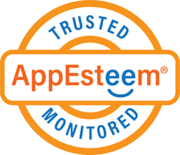Sometimes frustrating, often forgotten, and regularly the cause of security breaches, passwords are the virtual padlocks that many of us rely on to safeguard our online accounts. Whether you’re managing your email, social media, or banking, a strong password is the first line of defense against unauthorized access. However, many people unknowingly create weak or easily-guessed passwords in an attempt to keep them memorable, leaving themselves vulnerable to the exploits of hackers and cybercriminals.
In this guide, we’ll delve into the fundamentals of password security, discuss how to assess the strength of your current passwords, and give you tips and tricks for enhancing your overall digital security. If you’re one of the millions of people still currently using ‘123456’ as their password, there’s hope for you yet.
Understanding Password Security
Password security isn’t just about coming up with something that’s easy to remember: it’s about choosing a password that hackers can’t guess, even with sophisticated tools at their disposal. Passwords are the primary security measure for almost every online account, and using a weak or previously compromised password is one of the leading causes of data breaches. These breaches are called brute force attacks, and refer to when a hacker gains access to an account and information simply by guessing passwords.
Considering the ways in which cybercriminals are becoming more and more advanced, relying on poor password habits is a recipe for disaster. In the same way that hackers are using modern tools and knowledge to improve their success rate, anyone wanting to navigate the internet safely must adapt their practices to stay one step ahead.
What makes a password strong?
At this point it’s likely you’re asking yourself, “how secure is my password?” or maybe, “how can I make it stronger?”
Here are some of the best places to start:
- Length – a good password should be at least 12-16 characters long, although lots of accounts will only ask for a minimum of 8 characters. Each character you add increases the time it would take for a hacker to crack the password. Aim for longer passwords wherever possible.
- Complexity – by incorporating a mix of uppercase letters, lowercase letters, numbers, and special symbols (such as !, @ or #), you make your password more difficult to guess.
- Predictability – don’t use information that can be easily guessed or found through research, such as names, birthdays, or common words and phrases.
Common password weaknesses
The weakest passwords tend to have the following faults in common:
- Simple sequences – sequential numbers or letters (e.g. 123456, or abcdefg) are often some of the first passwords a hacker will try during a cracking attempt. These passwords are incredibly insecure and worryingly common.
- Reused passwords – using the same password across multiple accounts can pose a major security risk. If one account is compromised, all of the accounts that share that password will also be at risk. Considering that two-thirds of Americans use the same password across multiple accounts, that means a lot of opportunity for hackers to get stuck in where they don’t belong.
- Personal information – so much is shared online these days that it’s all too easy for a hacker looking to access your account to find the name of your pet, or partner, or the street you grew up on. Using information such as this as a password makes a hacker’s life easier.
Tools and Techniques to Test Your Password Strength
Testing the strength of your passwords can help alleviate any concerns you might have about your online security. There are numerous tools and techniques available to help you assess the quality of your current passwords.
Online password strength checkers
A quick and easy way to evaluate your password is by using online password strength checkers. These tools analyze your password based on length and complexity. However, when using these tools, make sure that they come from a trusted provider — don’t just enter your password into any old site. You might end up delivering it straight to the cybercriminals you’re hoping to avoid.
Analyzing password breaches
You should regularly check to see if any of your existing passwords have been compromised in a data breach. Many operating systems (such as Android and iOS) have built-in tools that will notify you if your passwords have appeared in a breach. Similarly, many businesses and organizations will inform their users if a breach has occurred that could pose a threat to your data or personal information.
Best Practices for Creating and Maintaining Secure Passwords
If passwords have the potential to be such a vulnerability, why do we continue to use them? Many people are currently asking if passwords are becoming obsolete, but the fact is, they won’t be going anywhere any time soon. Here are some of the best practices for creating and maintaining strong passwords.
Password management tools
One of the most effective ways to manage multiple strong passwords is by using a password manager. These tools store all of your passwords in an encrypted vault and can generate strong, unique passwords for each of your accounts. This eliminates the need to memorize passwords and reduces the temptation to use the same password across multiple sites.
Many operating systems come with their own password managers, but it’s also possible to use a single external password manager across all of your devices.
Implementing two-factor authentication (2FA)
An extra layer of security is always a good idea, and using two-factor authentication (2FA) wherever possible will help keep your accounts safe. 2FA adds an extra step to your login process, usually in the form of a one-time code sent to your phone or generated by an app. With 2FA enabled, even if a hacker obtains your password, they won’t be able to access your account without a second authentication factor. Many online services offer optional 2FA, but we would highly recommend utilizing it wherever possible.
Here are some of the most common forms of 2FA:
- SMS-based 2FA -After entering your password, you will be sent a code via text message to complete the login process.
- Authenticator apps – A specialized app is used to generate a time-sensitive code that you enter after inputting your password.
- Hardware tokens – These are physical devices that you can plug into your phone or computer to verify your identity.
Enhancing Your Overall Digital Security
Passwords themselves are just one aspect of your overall digital security. To ensure comprehensive protection, consider these additional measures.
Regularly update passwords
Even the strongest of passwords can become vulnerable over time. Cybercriminals are constantly learning and developing their tactics, and a password that was secure once might cease to be so when under attack from a savvy hacker. We would recommend updating your passwords at least once every six months for your most sensitive accounts.
Monitor and respond to security alerts
Many online services will let you know if there have been any suspicious login attempts or unusual activity on your account. These alerts are vital for the early detection of hacking attempts. If you receive an alert about suspicious activity, or information about a data leak from a service you use, take immediate action by changing your password and reviewing your account’s recent activity. Keep your contact information u- to-date to make sure you continue to receive these alerts.
A (pass)word to the wise
Using the same passwords you’ve had since high school might be tempting, especially in a world where there’s always so much to remember, but it’s an ineffective way to protect your personal information. By understanding the principles of strong passwords you can significantly reduce your risk of falling victim to cybercrime.
If you need a little help with your security, we have an impressive arsenal of tools and products designed to keep your devices safe.








